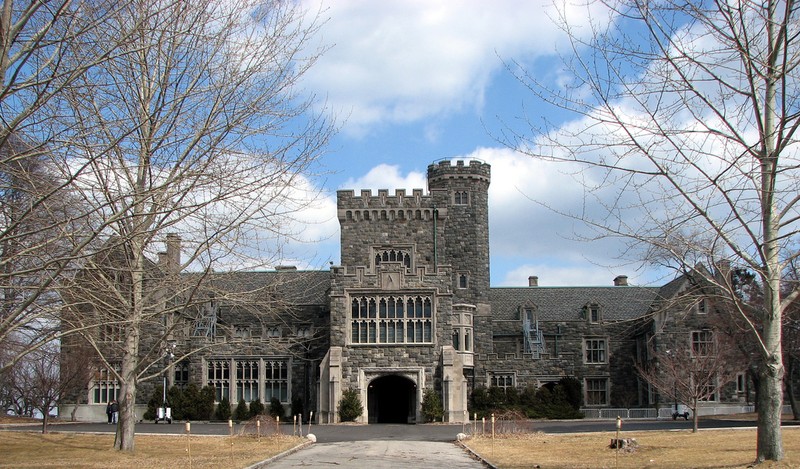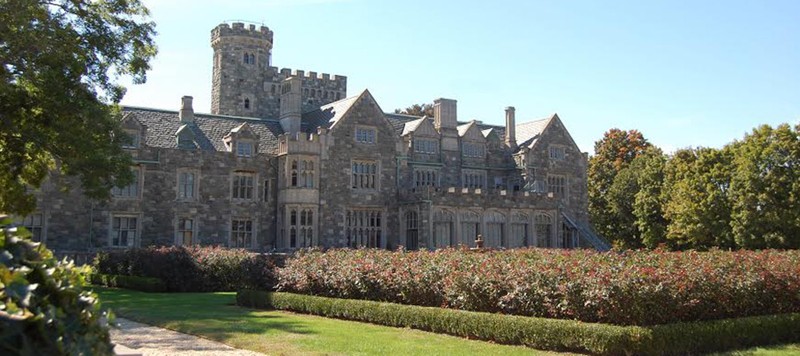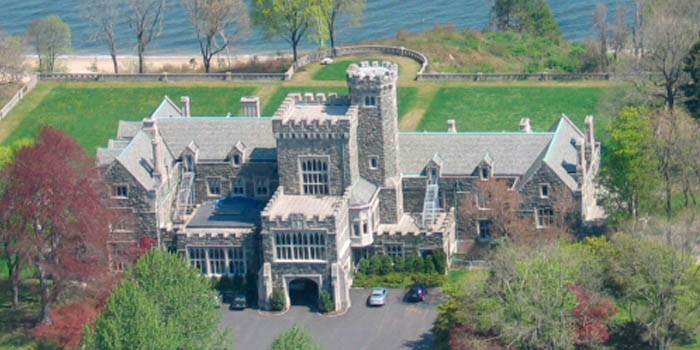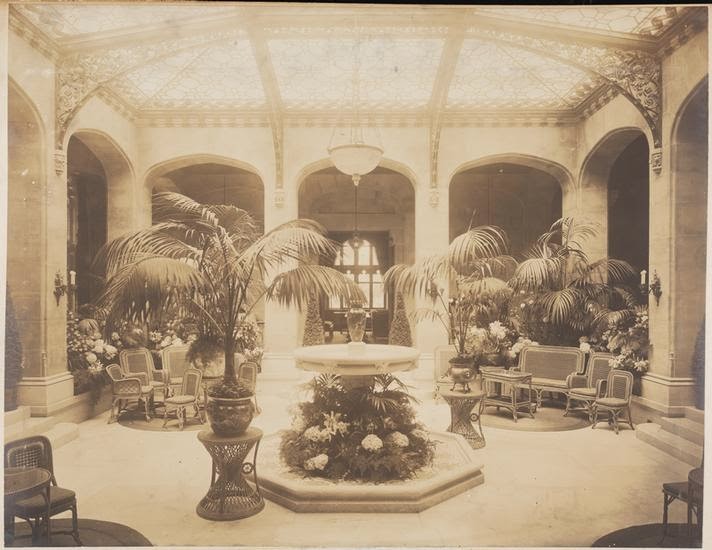Hempstead House (Gould-Guggenheim Estate)
Introduction
Text-to-speech Audio
Images
The front entrance of the house

The rear of the house and the rose garden

An aerial view of the house

Interior Palm Court http://www.oldlongisland.com/2014/07/hempstead-house.html

Backstory and Context
Text-to-speech Audio
Hempstead House is one of four houses on the Guggenheim estate and was one of the most lavish estates on the Gold Coast. During the roaring 1920s, the estate was the place where the Guggenheim family spent their summers and hosted parties, performances and galas. Sands Point might be most famous to readers as the "East Egg" in F. Scott Fitzgerald's Great Gatsby.
The mansion was designed by architects Hunt & Hunt and includes forty rooms with the first and second floors covering over 1.5 acres. Every room on the second floor contains a carved fireplace which is unique to each room. Perhaps the most impressive feature of the structure is the sixty-foot entrance foyer that includes a specially-crafted Wurlitzer Opus 445 Theatre organ. The organ was customized with specially designed pipes that exit through the floor of the foyer. The mansion was once full of European artwork, medieval wall tapestries, oriental rugs, and other assorted treasures and antiquities.
The mansion's library was modeled after the library within the palace of King James I. The billiards room once had a gold leaf ceiling, hand tooled leather wall covers, and 17th 17th-century workings taken from a Spanish palace. There is also a sunken Palm Court which once contained over 150 rare orchids, flowers and trees as well as an aviary house for exotic birds. Tours are available with advance reservations.
The house was closed in 1930 after the completion of a new mansion on the grounds. It was reopened in 1940 as a refugee home for children escaping the war in Europe. In 1942, 162 acres of the estate were donated to the Institute of Aeronautical Sciences and was completely purchased by the navy in 1946 to act as a Naval Training Device Center. And finally, in 1971 the county purchased the estate.
Today, tours are given of the house on weekends and it acts as the location for many weddings, corporate parties, private parties and is also the location where movies and shows such as Scent of A Woman, Malcolm X, Great Expectations, Teenage Mutant Ninja Turtles, The Blacklist, Gotham, Billions, Dare Devil, The Americans, Boardwalk Empire, Royals Pains and Masters of Sex were all filmed.
Cite This Entry
Matt McAuliffe and Clio Admin. "Hempstead House (Gould-Guggenheim Estate)." Clio: Your Guide to History. February 17, 2019. Accessed March 26, 2025. https://theclio.com/entry/38650

